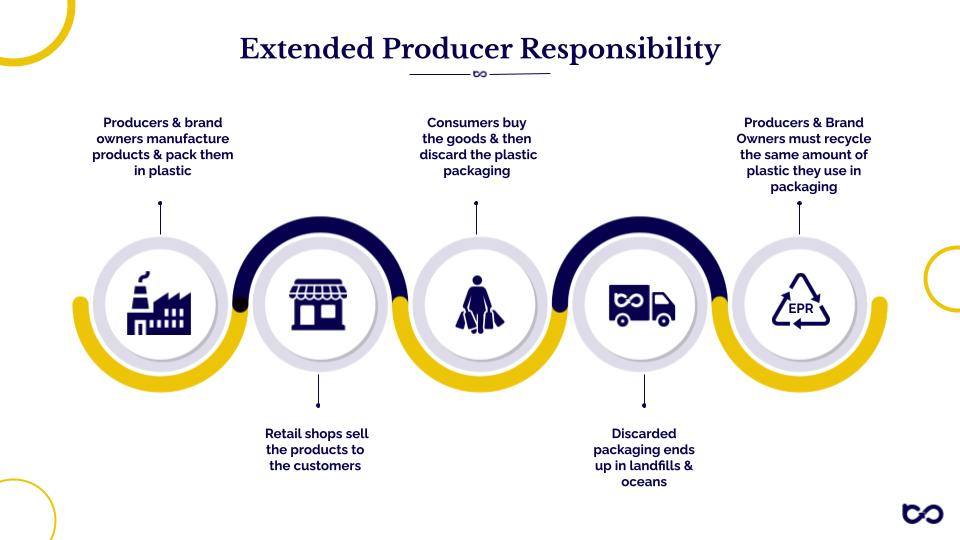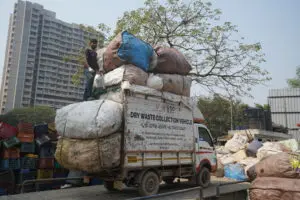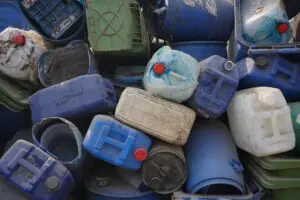Learn how Extended Producer Responsibility (EPR) shapes plastic waste management, compliance rules, and sustainability goals in India. Get the complete guide!
Every piece of plastic ever created still exists on Earth. Let that sink in.
In the time it takes you to finish reading this paragraph, an alarming amount of plastic waste will have been discarded globally. Some of it will float through city streets. Some will make its way into rivers, eventually finding a permanent home in the ocean, where it will outlive every single person reading this.
India generates 3.4 million tonnes of plastic waste annually, yet less than 30% is recycled. For decades, businesses have produced, packaged, and profited, while the responsibility of waste management fell on municipalities, local governments, and informal waste collectors. But times are changing.
Extended Producer Responsibility (EPR) is at the centre of this shift, making producers, importers, brand owners, manufacturers and sellers accountable for the entire lifecycle of plastic packaging—from production to post-consumer waste management.
This blog explores:
- What EPR is and how it works in India.
- Categories of plastic waste under EPR compliance.
- Roles and responsibilities of stakeholders in the EPR ecosystem.
- Challenges in plastic waste management and compliance.
- How EPR supports global sustainability goals.
- How ReCircle can help businesses navigate EPR compliance.
Let’s break it down.
1. What is Extended Producer Responsibility (EPR)?
Traditionally, waste collection and management were handled by municipal authorities. However, the increasing scale of plastic pollution has made it clear that municipalities alone cannot manage post-consumer effectively. EPR shifts the responsibility to the businesses that manufacture, import, or sell plastic packaging, ensuring they contribute to plastic waste collection, recycling and disposal.
EPR Under India’s Plastic Waste Management Rules.
The Plastic Waste Management (PWM) Rules, 2016, and subsequent amendments introduced mandatory EPR compliance for businesses. The policy requires that:
- Producers, importers, brand owners, manufacturers, and sellers take responsibility for collecting and managing the plastic waste generated by their products.
- Companies must register with the Central or State Pollution Control Board and submit a detailed EPR action plan
- Businesses must achieve annual recycling and recovery targets for plastic waste.
- Companies must incorporate the use of recycled plastic in their packaging to reduce the need for virgin plastic.
- Submit compliance reports proving their plastic recovery efforts.
The framework is designed to reduce environmental impact, promote circular economy, and encourage businesses to develop sustainable packaging alternatives.
Categories of Plastic Waste Under EPR
Plastic waste is categorized into five distinct types under India’s Plastic Waste Management Rules:
- Category I: Rigid Plastic Packaging – Includes hard plastics such as PET bottles, containers, caps, and household items that are easier to recycle.
- Category II: Flexible Plastic Packaging – Includes low-density polyethylene (LDPE) bags, wrappers, and films that require specialized recycling infrastructure.
- Category III: Multi-Layered Plastic (MLP) – Packaging that consists of multiple layers of plastic and/or a mix of plastic with other materials, making it more difficult to recycle.
- Category IV: Plastic sheet or like used for packaging as well as carry bags and commodities made of compostable plastics.
- Category V: Plastic sheet or like used for packaging as well as carry bags and commodities made of biodegradable plastics
Businesses must ensure proper collection, processing, and recycling of each category in compliance with EPR guidelines.
2. The Key Roles in EPR: Responsibilities of Different Stakeholders
A well-structured EPR system depends on active participation from various stakeholders, each playing a critical role in ensuring responsible plastic waste management.
Producers are individuals or entities engaged in the manufacturing of plastic packaging, including those producing intermediate materials or involved in contract manufacturing for brand owners. Producers must comply with EPR regulations, submit annual reports on their plastic production volumes and are also encouraged to adopt sustainable manufacturing practices that reduce reliance on virgin plastic.
Importers are entities involved in importing plastic packaging, products or raw materials such as resins or preforms for commercial use. They must ensure that all imported plastic materials comply with national waste management regulations and are processed responsibly at the end of their lifecycle.
Brand Owners are defined as those who sell any commodity under a registered brand label or trademark. They must ensure that their packaging aligns with sustainable guidelines and actively collaborate with recycling agencies and Producer Responsibility Organizations (PROs). By integrating eco-friendly packaging alternatives, brand owners can significantly reduce the environmental impact of their products.
Manufacturers are those entities that produce plastic raw materials, including compostable and biodegradable plastics and play a foundational role in the supply chain. Their choices in material composition directly impact the recyclability and sustainability of plastic products, making their involvement essential in reducing reliance on virgin plastic and promoting circularity.
Sellers are engaged in selling plastic raw materials such as resins, pellets, or intermediate materials used for producing plastic packaging. They play a pivotal role in ensuring that plastic entering the supply chain aligns with circular economy principles, encouraging sustainable usage and disposal practices.
Plastic Waste Processors form the backbone of the recycling ecosystem. These entities specialize in collecting, sorting, and recycling plastic waste into raw materials that can be reintegrated into production cycles. Some processors undertake end-of-life disposal of plastic waste through methods such as waste-to-energy, waste-to-oil, and co-processing in cement kilns. Their role is critical in achieving plastic circularity and reducing environmental pollution
Each stakeholder in the EPR system contributes to a larger framework that drives sustainability, accountability, and environmental responsibility.
3. The Stakeholders Involved in the EPR Ecosystem
An effective EPR system relies on coordination between multiple stakeholders who contribute to different aspects of plastic waste management.
1. Entities Dealing in Plastic Waste Packaging
These include PIBOs and SIMPs responsible for introducing plastic packaging into the market.
2. Waste Pickers / Safai Saathis
India’s informal waste collection network plays a key role in waste management. Safai Saathis manually collect, sort, and supply plastic waste to recycling units.
3. Level 1 (L1) Aggregators
L1 aggregators collect waste from waste pickers, housing societies, and small businesses. They sort and supply plastic waste to larger aggregators or recyclers.
4. Level 2 (L2) Aggregators
L2 aggregators handle waste at a larger scale, consolidating and processing plastic waste from L1 aggregators before it reaches recyclers or waste processors.
5. Government Bodies
Government authorities, such as the Central Pollution Control Board (CPCB) and State Pollution Control Boards (SPCBs), including the Maharashtra Pollution Control Board (MPCB), enforce EPR regulations, monitor compliance, and impose penalties for non-compliance.
Urban Local Bodies are responsible for setting up infrastructure for plastic waste management, including segregation, collection, and disposal, either independently or through agencies.
6. Plastic Waste Processors
These entities collect, sort, and recycle plastic waste into raw materials for reuse. Some also manage end-of-life disposal through waste-to-energy, waste-to-oil, or co-processing in cement kilns.
7. Producer Responsibility Organizations (PROs)
PROs act as intermediaries that help businesses meet EPR compliance by collecting, processing, and recycling plastic waste on their behalf. PROs are responsible for providing end-to-end compliance solutions to ensure businesses meet regulatory standards efficiently.
This interconnected network of stakeholders ensures that plastic waste is effectively managed and does not end up polluting the environment.
4. How Does the EPR Fulfillment Process Work?
Understanding the Extended Producer Responsibility process is key to avoiding fines and ensuring compliance. It is a structured framework requiring businesses to follow specific steps to effectively manage their plastic waste obligations while contributing to environmental sustainability.
Here’s a step-by-step breakdown:
Step 1: EPR Registration on the CPCB Portal
The first step in the process is EPR Registration on the CPCB Portal.
Every producer, importer, brand owner, seller, manufacturer and plastic waste processor (PIBOs, SIMPs and PWPs) must register with the Central Pollution Control Board (CPCB) before selling plastic-packaged products in India. This registration involves declaring the type and volume of plastic packaging a company introduces into the market.
Failure to comply with this registration requirement can lead to significant penalties, disruptions in supply chains, and legal repercussions.
Step 2: Setting EPR Targets for Waste Collection & Recycling
Once registered, companies must establish EPR Targets for Waste Collection and Recycling based on their historical production data.
These targets, which are mandated by regulatory authorities, change year by year, ensuring that businesses progressively take active responsibility for the plastic waste they generate. Companies must recover a specific percentage of the plastic they produce and ensure that it is either recycled or processed sustainably.
To remain compliant, they must also provide documented proof of their waste management activities to regulatory bodies.
Step 3: Executing Waste Collection & Processing
The next phase in EPR fulfillment is Executing Waste Collection and Processing. Businesses can meet their obligations through three primary approaches.
First, they may choose to set up in-house waste collection and recycling programs, which involve directly managing the retrieval and processing of plastic waste. While this offers complete control over compliance, it requires significant investment in infrastructure and logistics.
Second, businesses can partner with Producer Responsibility Organizations (PROs), third-party organizations that specialize in managing waste collection, processing, and regulatory reporting on behalf of brands. This option is the most cost-effective and widely preferred by companies.
Lastly, businesses can purchase EPR credits from registered recyclers, allowing them to offset their plastic waste footprint by financing authorized waste recovery and recycling initiatives. However, this must be conducted through CPCB-authorized recyclers to ensure compliance and credibility.
Step 4: Compliance Reporting & Government Audits
The final step in EPR fulfillment is Compliance Reporting and Government Audits.
Regulatory bodies require businesses to submit quarterly and annual reports detailing their plastic waste recovery efforts. These reports must contain verifiable data proving that the collected plastic has been processed responsibly
Additionally, businesses must maintain real-time tracking systems to monitor waste collection and processing activities, ensuring transparency and accountability throughout the supply chain.
Government audits may be conducted periodically to verify compliance, and failure to meet the prescribed standards can result in financial penalties or restrictions on business operations.
By following these steps, businesses can seamlessly integrate EPR into their operational framework. Beyond compliance, EPR presents an opportunity for companies to demonstrate their commitment to sustainability, enhance their corporate reputation, and contribute meaningfully to a circular economy.
5. The Biggest Challenges in EPR Compliance (And How to Solve Them)
EPR compliance is not without its hurdles, but each challenge presents an opportunity for businesses to innovate and refine their sustainability practices.
1) Multi-Layered Plastics (MLPs) Are Hard to Recycle
One of the biggest obstacles is the recycling of multi-layered plastics (MLPs), such as snack packets and sachets. These materials are difficult to process using conventional recycling methods, leading to increased waste accumulation.
Businesses can tackle this challenge by transitioning to mono-material packaging, which is easier to recycle. Additionally, investing in chemical recycling and advanced waste-to-energy technologies can significantly improve waste processing efficiency.
2) Informal Recycling Sector Lacks Standardization
Another challenge lies in the informal nature of India’s recycling sector. A significant portion of plastic recovery occurs outside official tracking systems, making it difficult to ensure compliance and accountability.
By partnering with traceable recycling networks and implementing smart tracking technologies, businesses can create a transparent and verifiable waste recovery system, ensuring regulatory adherence while supporting informal waste collectors.
3) Compliance Costs Can Be High
The perceived high costs of EPR compliance also deter some businesses from fully embracing sustainable practices. Many companies see EPR as an additional financial burden rather than an investment in long-term sustainability.
However, integrating circular economy models that incorporate recycled plastics into new packaging can offset costs while reinforcing corporate responsibility. Collaborating with PROs can also provide cost-effective solutions for meeting compliance requirements efficiently.
6. How EPR Aligns with Sustainable Development Goals (SDGs)
EPR directly contributes to the following United Nations Sustainable Development Goals (SDGs):
- SDG 12 (Responsible Consumption & Production): Encourages businesses to redesign packaging for sustainability.
- SDG 13 (Climate Action): Reduce plastic-related emissions from landfills and incineration.
- SDG 14 (Life Below Water): Prevents marine plastic pollution.
- SDG 15 (Life on Land): Promotes plastic recovery and circular waste management.
- SDG 17 (Partnerships for the Goals): Strengthens collaboration between businesses, recyclers, and regulators.
7. How ReCircle Simplifies EPR Compliance for Businesses
At ReCircle, we provide businesses with end-to-end EPR compliance solutions, ensuring seamless waste recovery and responsible recycling. By leveraging our extensive network and data-driven approach, we simplify compliance for companies of all sizes.
1) A Nationwide Impact:
We’ve built a widespread waste recovery network that enables efficient plastic waste collection and recycling across diverse locations. With our infrastructure and expertise, businesses can meet regulatory requirements effortlessly while actively contributing to a more sustainable future.
2) Technology-Driven Compliance:
Our proprietary digital platform, ClimaOne, takes EPR compliance to the next level. Through real-time tracking, plastic credit management, and impact reporting, we ensure transparency and accountability. This data-driven approach not only simplifies compliance but also helps businesses refine their sustainability strategies.
3) Community-Centric Approach:
For us, sustainability goes beyond just meeting compliance standards. We organize dry waste collection programs, and training initiatives that empower local waste workers, fostering inclusive waste management solutions. Our goal is to help businesses shift from waste management to resource optimization—creating a circular economy that benefits both people and the planet.
Through innovation, strategic partnerships, and a commitment to a circular economy, ReCircle is redefining how businesses approach EPR compliance, making it both effective and impactful.
8) Take the Next Step Toward Seamless EPR Compliance
Sustainability isn’t just about compliance—it’s about securing your brand’s future. At ReCircle, we tailor EPR solutions to fit your business, ensuring you meet regulations effortlessly while enhancing your environmental impact. Our experts handle the complexities, so you can focus on what you do best—building a responsible, future-ready brand.




